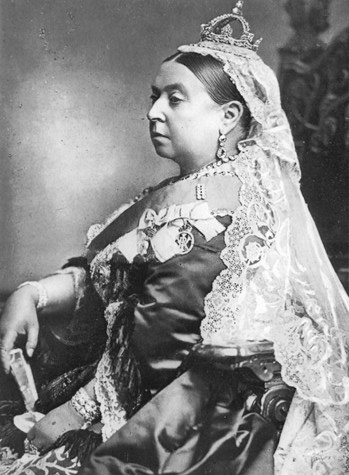IN FEBRUARY 2012 Her Majesty The Queen became only the second sovereign in British history to have reigned for 60 years.
In celebration, a spectacular exhibition at Buckingham Palace will show the many ways in which diamonds have been used and worn by British monarchs over the last two centuries. The exhibition includes an unprecedented display of a number of The Queen’s personal jewels – those inherited by Her Majesty or acquired during her reign.
Diamond, the hardest natural material known, carries associations of endurance and longevity.
Queen Victoria adopted the small crown following the death of Prince Albert
These qualities, allied to the purity, magnificence and value of the stones, have led rulers to deploy diamonds in regalia, jewellery and precious objects. Individual diamonds have achieved great renown, passing down the generations and between enemies or allies as potent symbols of sovereignty and as precious gifts.
Many of these extraordinary stones have undergone a number of transformations during their history, having been re-cut or incorporated into new settings as fashions and tastes have changed.
Queen Victoria is the only other monarch to celebrate a Diamond Jubilee.
The exhibition includes the magnificent Coronation Necklace and Earrings created for Queen Victoria and subsequently worn by Queen Alexandra, Queen Mary, Queen Elizabeth (The Queen Mother) and Her Majesty The Queen at their coronations.
The necklace is formed of 25 graduated cushion-shaped brilliant-cut diamonds and a central drop-shaped pendant of 22.48 carats.
Queen Victoria’s dramatic Fringe Brooch was designed to be worn at the centre of a chaîne de corsage along the top of the fashionably low-cut bodices of the period, as seen in Franz Xaver Winterhalter’s State portrait of the Queen from 1859.
The brooch consists of a large emerald-cut brilliant surrounded by twelve large brilliants, from which are suspended nine diamond chains.
It was almost certainly made in October 1856 by R & S Garrard, who remodelled an existing piece of jewellery that had been presented to the Queen by the Sultan of Turkey, Abdul Mejid I in May that year.
After Prince Albert’s death in 1861, Queen Victoria wore the Fringe Brooch without the chaîne.
Queen Mary wearing the Girls of Great Britain and Ireland tiara
The brooch was left to King Edward VII and often worn by his consort, Queen Alexandra.
Queen Elizabeth The Queen Mother wore the brooch for the Coronation in 1953.
The beautiful miniature crown worn by Queen Victoria for her official Diamond Jubilee portrait in 1897 was made by R & S Garrard in 1870.
It was designed to be worn over a veil, which the Queen adopted following the death of Prince Albert.
The crown’s 1,187 diamonds give it a grandeur that belies its tiny proportions (it measures just 9 cm by 10 cm). Probably because of its physical lightness, Queen Victoria favoured this crown over any other throughout the last 30 years of her life.
The Girls of Great Britain Tiara was a wedding present to Princess Victoria Mary of Teck (later Queen Mary) on behalf of the ‘Girls of Great Britain and Ireland’.
The Princess (then Duchess of York) wore it at the celebrated Devonshire House Ball in 1897 to complement her French Renaissance-period costume.
The tiara was presented to Her Majesty by Queen Mary as a wedding present and is frequently worn by The Queen.
European diamond cutting reached the peak of mathematical precision in the early 20th century with the invention of the round brilliant cut.
By allowing the best possible balance between reflected and refracted light, cutting releases the internal ‘life’ and ‘fire’ that give the diamond its unique characteristics. Among more modern pieces in the exhibition are the South Africa Necklace, presented to the then Princess Elizabeth on her 21st birthday in 1947.
The Williamson Brooch incorporates at its centre what is considered to be the finest pink diamond ever discovered. The pink diamond was found in Tanzania in October 1947 by the Canadiangeologist Dr JT Williamson, who gave the uncut stone to Princess Elizabeth for her wedding in November that year.
In 1953 Cartier set the cut diamond at the centre of the jonquil-shaped brooch with 200 small diamonds, also presented by Dr Williamson.
The exhibition also includes a number of historic objects to show the skill and ingenuity with which diamonds have been used in different cultures and traditions.
They include the exquisite 18th century bloodstone box made for King Frederick the Great of Prussia.
The box incorporates nearly 3,000 diamonds arranged pictorially to represent flowers, insects and musical instruments.
